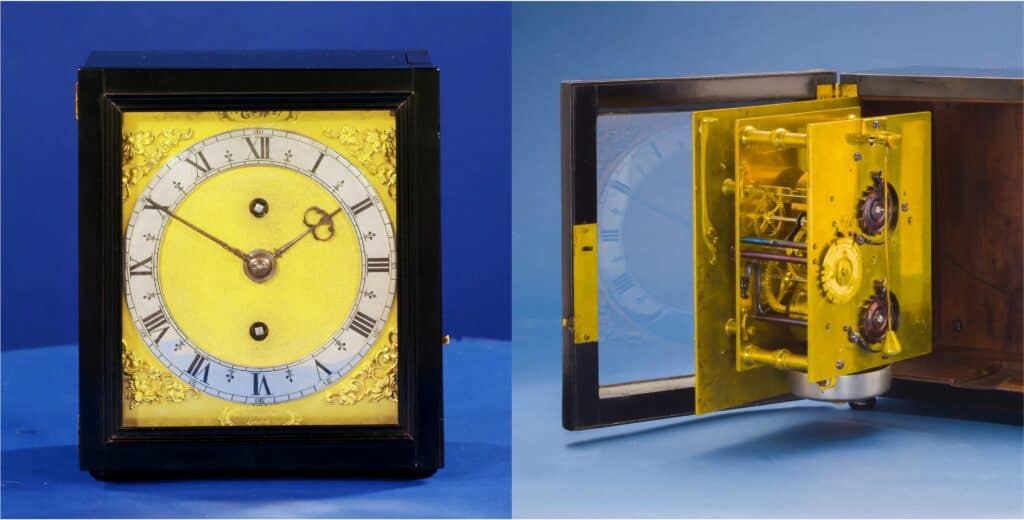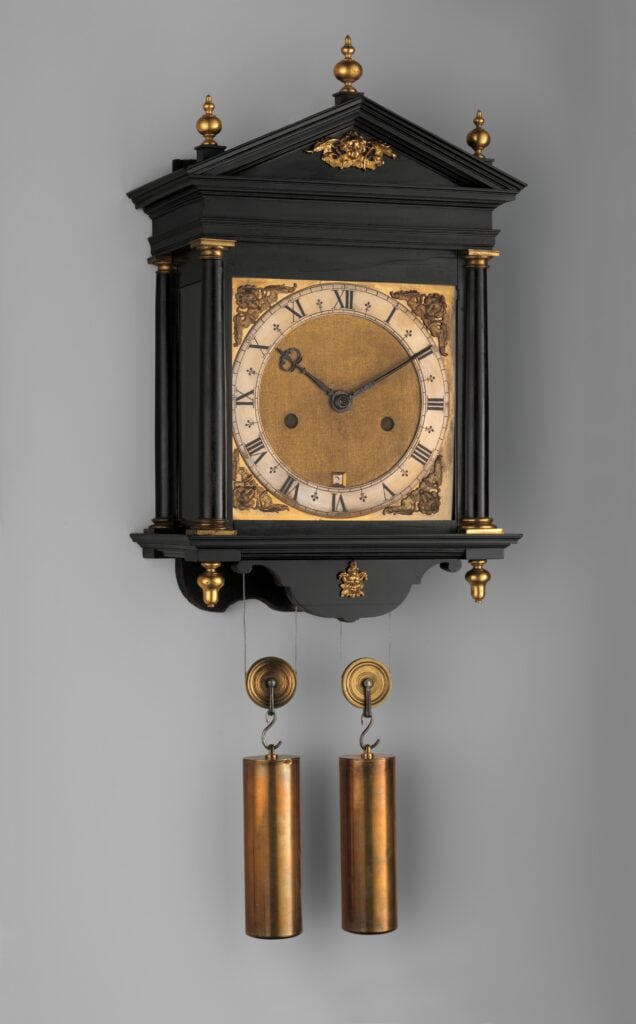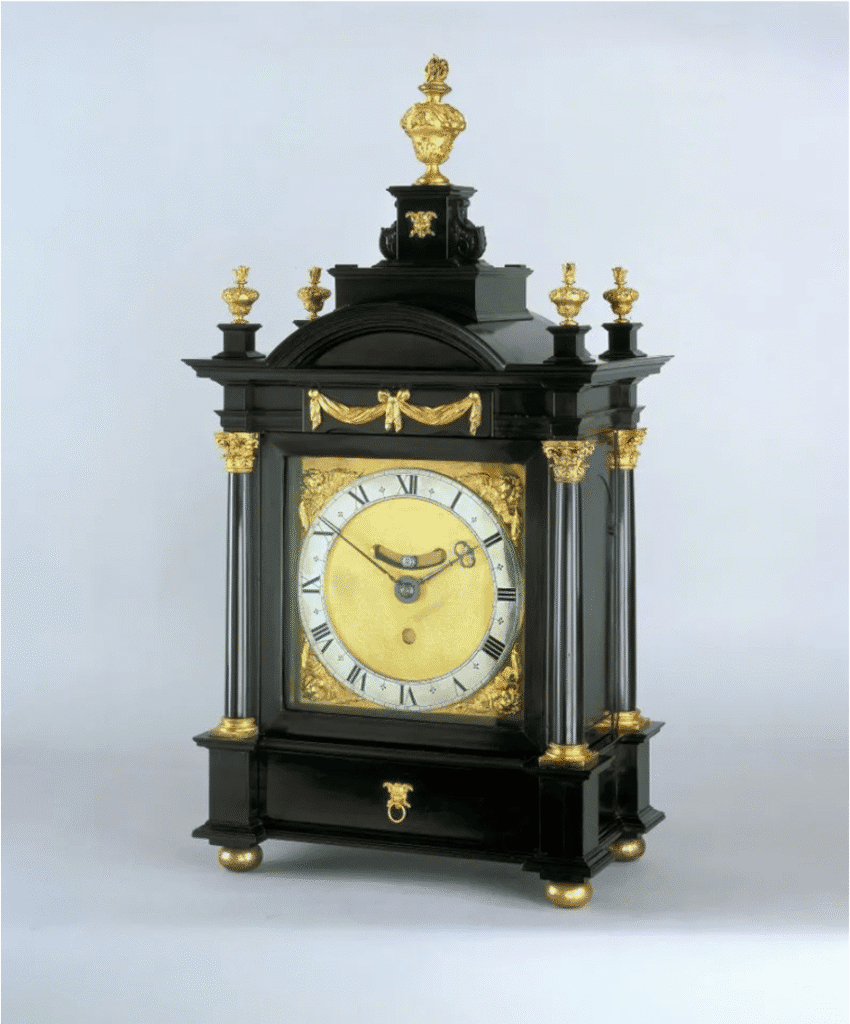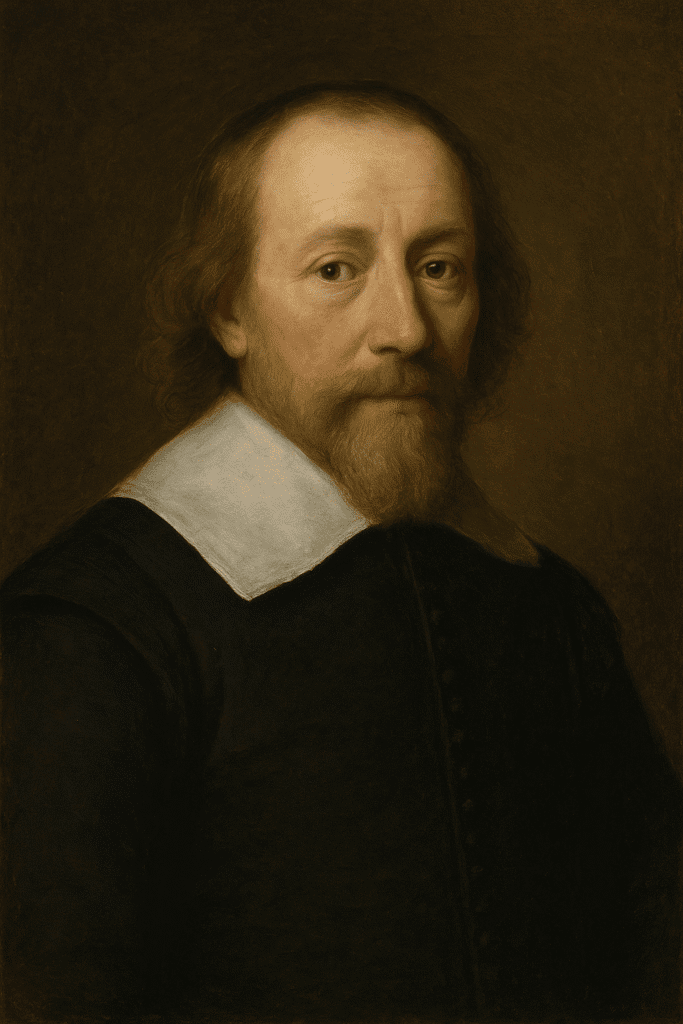In this occasional series, we will explore the life and achievements of the greatest and most respected horologists of their time. This feature will focus on Ahasuerus Fromanteel a figure whose ingenuity helped shape the very foundation of English horology.
Few names in the long history of horology resonate with the same quiet authority as Ahasuerus Fromanteel. Revered by collectors, scholars and makers alike, he was a man whose pioneering work not only transformed the precision of timekeeping but reshaped the very expectations of accuracy in the 17th century.

The story of British horology really begins here, with the production of this minimally decorated box clock (above). The Fromanteel Pendulum Box Clock is among the most historically important first domestic pendulum clocks produced in Britain.
Fromanteel hailed from a line of Dutch Protestant refugees—the Walloons—who made their home in Norwich at the turn of the 17th century. It is likely that his early years were spent at the forge, learning the craft of the blacksmith. By 1629, aged just twenty-two, he had set his sights on London, becoming a member of the Dutch Reformed Church, known as the strangers’ church, at Austin Friars.
Over the following two decades, Fromanteel established himself as one of the most accomplished craftsmen of his age. His talents ranged widely: from the precise grinding of telescopic lenses to the creation of clocks and watches that would help shape English horology. Beyond timekeeping, he also applied his mechanical genius to engineering works—most notably his innovative dredging machines, which earned him considerable renown.

Fromanteel’s greatest legacy lies in what is widely regarded as the first introduction of the pendulum clock to England.
Following Christiaan Huygens’ groundbreaking development of the pendulum regulator in the Netherlands (1656), Fromanteel recognised the enormous potential of this new technique for increasing accuracy. His workshop entered into collaboration and exchange with Dutch makers, and by 1658, Fromanteel was advertising clocks “that keep time exactly” — a phrase made possible only because of the pendulum’s reliability (see below).

This was not merely a technical improvement. It was a revolution. Where earlier domestic clocks might lose or gain 15 minutes a day, a pendulum clock could restrict variation to mere seconds. For merchants, mariners, scientists, and households, it was nothing short of transformational.
While known primarily for innovation, Fromanteel was also a stylistic pioneer. His longcase clocks — among the earliest of their kind in England — blended Dutch refinement with London craftsmanship. These pieces were not only precision instruments but objects of art, signalling the rise of a new aesthetic in English domestic interiors: tall, dignified, reliable timekeepers that became heirlooms across generations.

Ahasuerus did not work alone. His sons — John, Ahasuerus Jr., and Abraham Fromanteel — became significant makers in their own right, ensuring that the Fromanteel name remained influential across England and the Low Countries for decades. Indeed, in 1657, Ahasuerus Fromanteel’s son, John Fromanteel, was sent to The Hague in the Netherlands, where he worked under contract with clockmaker Salomon Coster to aid in the production of Huygens’ first domestic pendulum clocks.
Modern collectors and scholars continue to hold Fromanteel in the highest regard. His surviving pieces are rare, coveted, and deeply studied.

Ahasuerus Fromanteel reminds us that horology is more than craftsmanship; it is the pursuit of understanding and harnessing time itself. His clocks continue to tick, centuries later, as living proof that great makers leave echoes not just in wood and brass, but in the very way we measure our world.
Fromanteel’s work set the standard for generations of clockmakers who followed.
N.B. Hero image is an artist’s impression


